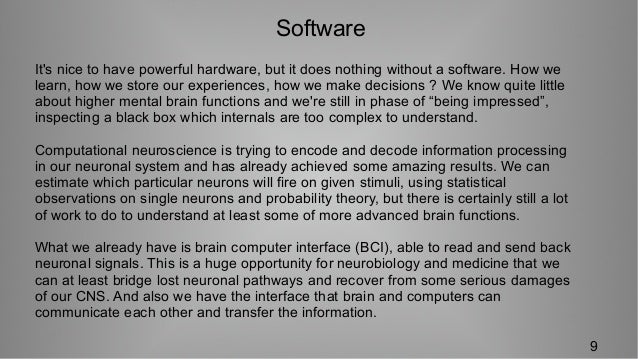

In an accompanying commentary, Orsborn and Pavithra Rajeswaran, also at the University of Washington, write that implantable BCIs “will need to provide tremendous performance and usability benefits to justify the expense and risks associated with implanting electrodes into the brain”. It will be some time before such brain-reading systems are ready for wider use. For example, Tamil has 247 letters, many of which look similar, which could confuse the algorithm. One unknown is how well the algorithm might work for languages not based on the Roman alphabet. The letters r, h and n, for example, require similar movements and so similar brain activity. Some letters were harder to distinguish than others, according to the study in Nature. When the scientists added autocorrect the accuracy rose to 99%.ĭuring the sessions, T5 often felt that the imaginary pen in his hand was moving across the page and tracing out letters, and that he could “write” faster if he kept letters small, Willetts said. Many sessions later, the algorithm could predict in real time which letter the man was trying to write with 94.1% accuracy. These recordings, and others taken as T5 tried to write out example sentences, were used to train an artificial intelligence algorithm. The scientists found that more than 10 years after the accident, the man’s brain still produced distinct patterns of neural activity for each letter and various punctuation marks. As he tried, they recorded activity from the brain region that would have controlled his movements. Willett and his colleagues asked T5 to imagine he was holding a pen above a pad of paper and then to try to write individual letters of the alphabet, even though he could not move his arm or hand. The man had two computer chips, each the size of a baby aspirin and bearing 100 electrodes, placed on the left side of his brain where neurons send signals to control the right hand. These are small, implantable computer chips that read electrical activity straight from the brain.
#THEBRAIN 9 SOFTWARE TRIAL#
In the case of T5, nine years after his accident he enrolled on a clinical trial called BrainGate2 to investigate the safety of brain-computer interfaces (BCIs). For all the progress made since then, researchers have long dreamed of more efficient systems that tapped directly into the brain. He dictated the entire book by having the freelance editor Claude Mendibil read the alphabet aloud and blinking when she reached the next letter he wanted. Bauby had a massive stroke in 1995 that left him “locked-in”, able to blink only his left eyelid. Hawking’s system was a big improvement on the painstaking process used by Jean-Dominique Bauby, the late editor-in-chief of French Elle, to write his 1997 memoir, The Diving Bell and the Butterfly. To select one, and to build up words, he simply tensed his cheek.
#THEBRAIN 9 SOFTWARE SOFTWARE#
Scientists have developed numerous software packages and devices to help paralysed people communicate, ranging from speech recognition programs to the muscle-driven cursor system created for the late Cambridge cosmologist Stephen Hawking, who used a screen on which a cursor automatically moved over the letters of the alphabet. “Instead of detecting letters, the algorithm would be detecting syllables, or rather phonemes, the fundamental unit of speech,” he said.Īmy Orsborn, an expert in neural engineering at the University of Washington in Seattle, who was not involved in the work, called it “a remarkable advance” in the field. On individual letters, his “mindwriting” was more than 94% accurate.įrank Willett, a research scientist on the project at Stanford University in California, said the approach opened the door to decoding other imagined actions, such as 10-finger touch typing and attempted speech for patients who had permanently lost their voices. The man, known as T5, who is in his 60s and lost practically all movement below his neck after a spinal cord injury in 2007, was able to write 18 words a minute when connected to the system. It is the first time scientists have created sentences from brain activity linked to handwriting and paves the way for more sophisticated devices to help paralysed people communicate faster and more clearly. A man who was paralysed from the neck down in an accident more than a decade ago has written sentences using a computer system that turns imagined handwriting into words.


 0 kommentar(er)
0 kommentar(er)
